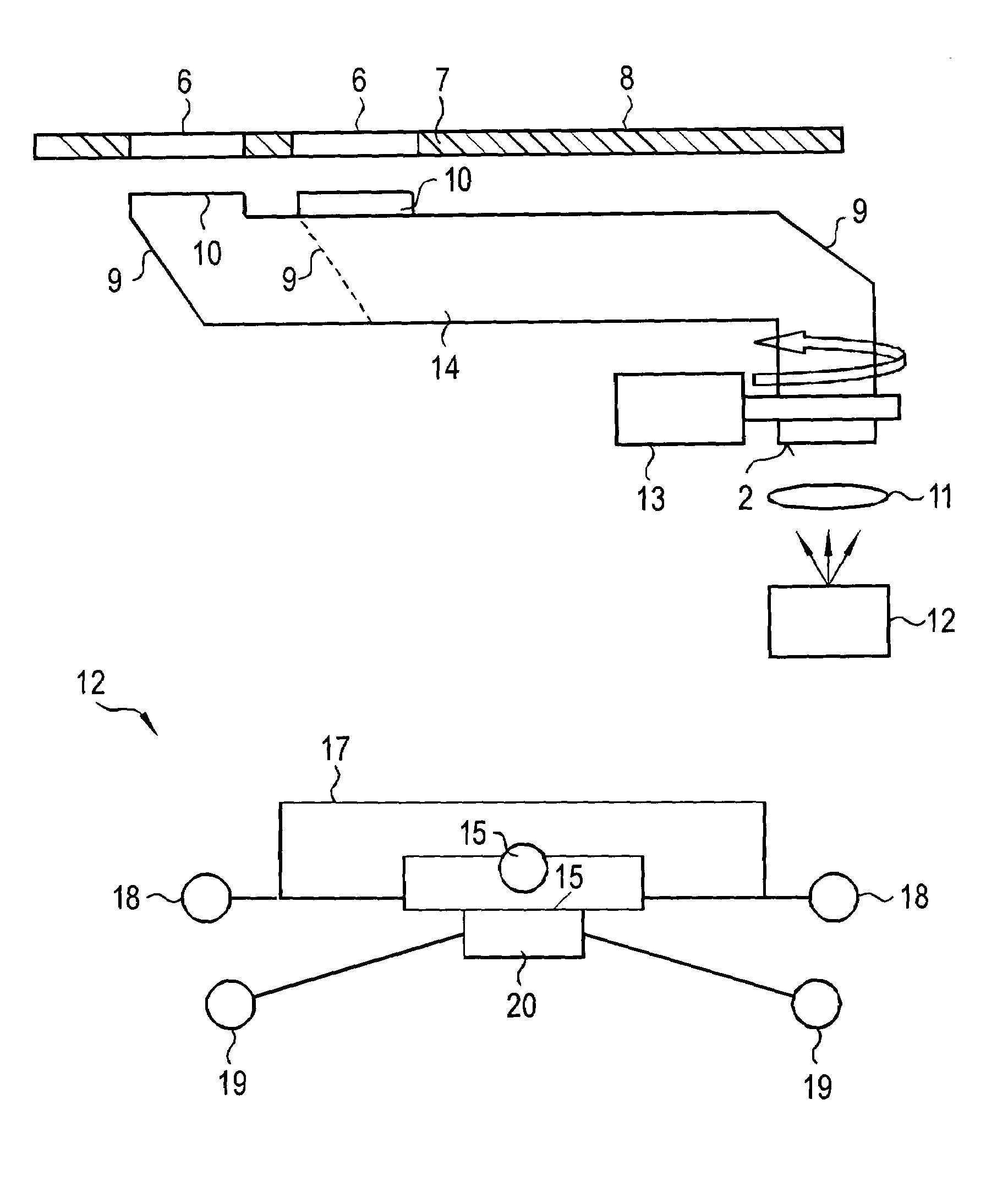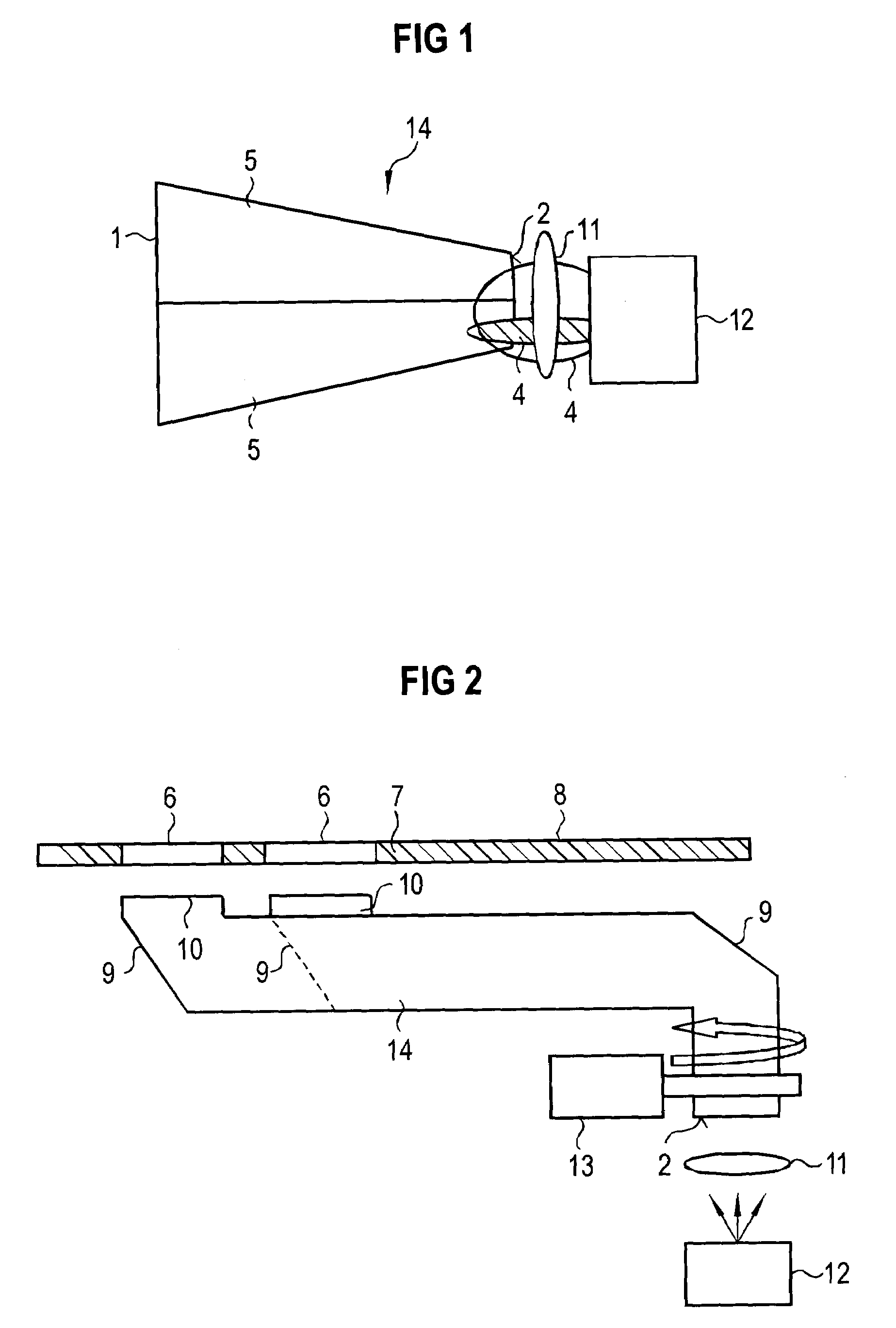Display device comprising a luminous element with an emission characteristic of controllable solid angle
a technology of luminous elements and light guides, which is applied in the direction of light control, spectral modifiers, microscopes, etc., can solve the problems of limited signal production and optical crosstalk, and achieve the effect of simple and cost-effective design
- Summary
- Abstract
- Description
- Claims
- Application Information
AI Technical Summary
Benefits of technology
Problems solved by technology
Method used
Image
Examples
Embodiment Construction
[0017]FIG. 1 illustrates a first embodiment of a display device according to the invention. Provided at the beginning of a beam path is a luminous element 12 that, depending on how it is driven, can produce a spatially different distribution of light cones, i.e., a different emission characteristic. By way of example, FIG. 1 shows two light cones 4 that, of course, cannot be produced simultaneously, but are illustrated jointly in FIG. 1 for illustrative purposes. A first light cone is narrow and therefore strikes a light entrance region 2 of a light guide 14 such that only a portion of the light entrance region 2 is irradiated by the light cone 4. Formed in the light guide 14 are two light channels 5 that are optically separated from one another, for example, by a reflecting layer. Instead of a reflecting layer between the two light channels 5 of the light guide 14, it is also conceivable to provide other non-transmissive or only partly transmissive layers, for example, a layer that...
PUM
 Login to View More
Login to View More Abstract
Description
Claims
Application Information
 Login to View More
Login to View More - R&D
- Intellectual Property
- Life Sciences
- Materials
- Tech Scout
- Unparalleled Data Quality
- Higher Quality Content
- 60% Fewer Hallucinations
Browse by: Latest US Patents, China's latest patents, Technical Efficacy Thesaurus, Application Domain, Technology Topic, Popular Technical Reports.
© 2025 PatSnap. All rights reserved.Legal|Privacy policy|Modern Slavery Act Transparency Statement|Sitemap|About US| Contact US: help@patsnap.com



